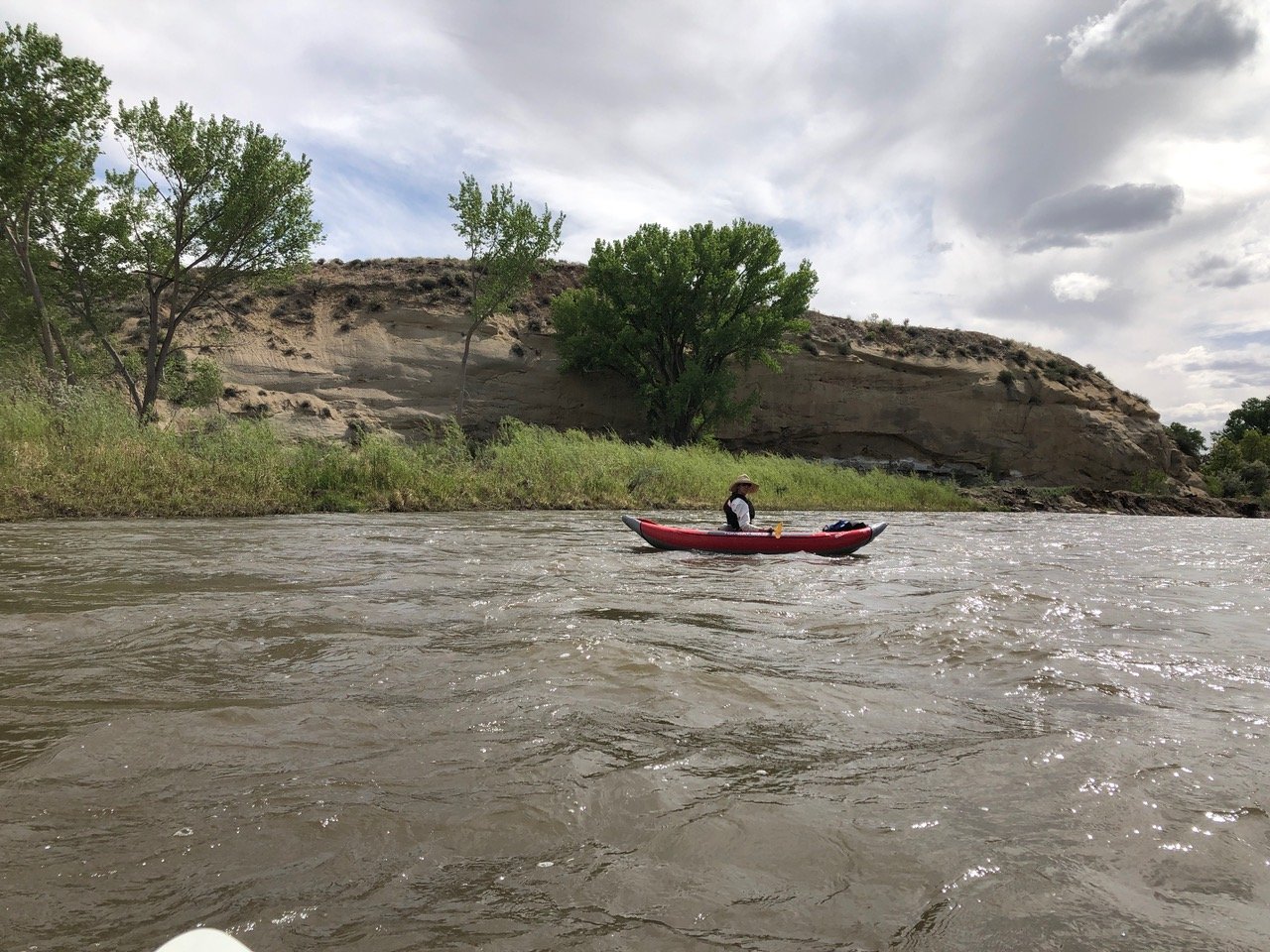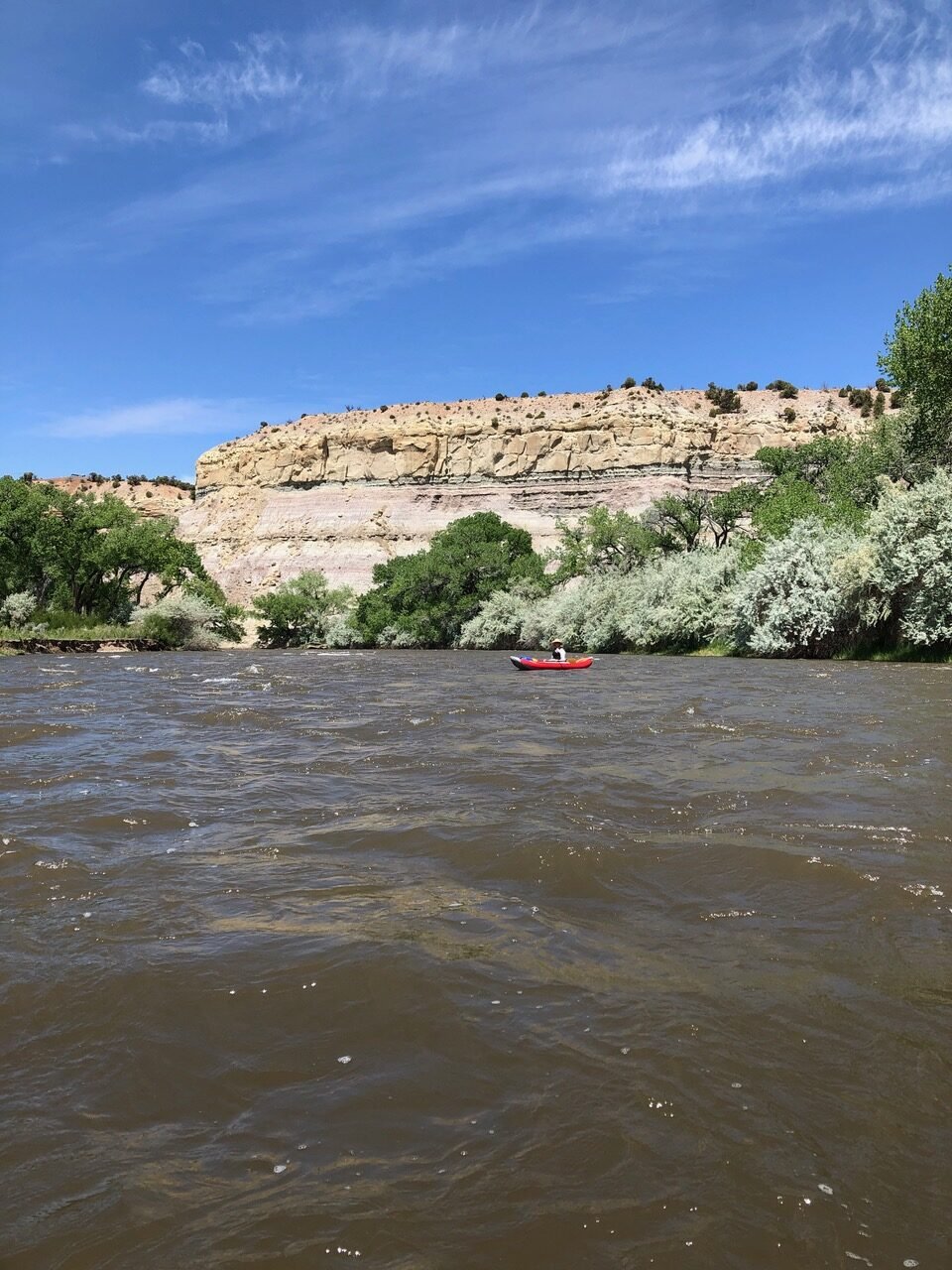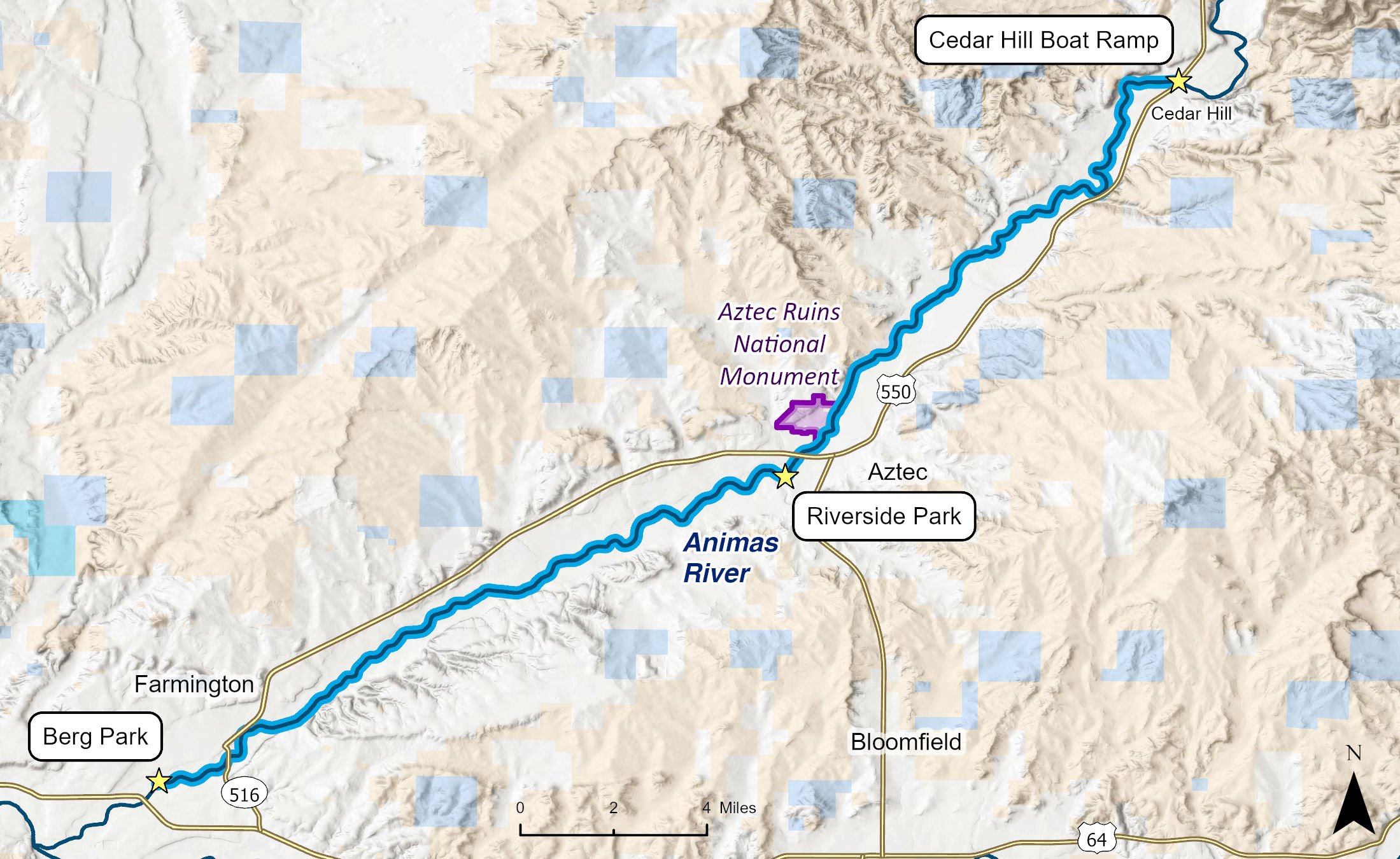
Animas River
From its birthplace in the snow fields of Colorado's rugged San Juan Mountains, the Animas River flows into New Mexico, passing through the cities of Aztec and Farmington before joining the San Juan River.
The origin of the name "animas" is debated, but it is thought that Spanish conquistador Juan Maria de Rivera gave these waters the name "Rio de las Animas" or River of Souls in 1765. It is unknown what the Ancestral Puebloan people---who utilized the waters of the Animas for centuries or millennia---named the river.
The only major tributary of the Animas is the Rio Florida, which feeds the Animas from their confluence just north of the Colorado-New Mexico border.

The Animas is a troubled river to say the least. Heavy mining near the river's headwaters in the late 19th and early 20th centuries resulted in high levels of pollution by toxic metals such as arsenic, cadmium, lead, aluminum, and copper. In the summer of 2015, the Gold King Mine spill above Durango, Colorado, dumped millions of gallons of toxic wastewater into the river, turning the blue-green waters orange and contaminating irrigated farmland far downstream. Further, urban development within the river corridor, oil and gas extraction activities, and overuse all plague this river. Thankfully, since the Gold King spill, regional water managers and community members have banded together to improve management of the Animas in both Colorado and New Mexico.
The Rio Animas is also a major whitewater rafting attraction as well as an important river for sportfishing, boasting both native and non-native trout species. Year-round hatches of aquatic insects such as Dipteran and mayflies make this a fishery that is fun even in the winter months.
From the Colorado border south, the Animas snakes through sandstone cliffs and rich wetland ecosystems before entering farmland and then suburban environments. In New Mexico, the Animas is mostly a relaxing float trip with Class I rapids and the occasional Class II during spring runoff. Within Farmington, boulders and supporting concrete structures installed in a 100-yard section of the Animas River through Berg Park have turned the stretch into an urban whitewater experience that pulls boaters from across the region and beyond.
The Riverside Park in Aztec makes for a nice resting or picnic spot. Within Farmington, over 8 miles of walking, running, and bike trails that trace the Animas River connect Berg Park, Animas Park, the Riverside Nature Center, and beyond. Further upstream the Animas flows past Aztec Ruins National Monument, which was designated in 1923 to preserve impressive and partially intact Chacoan ruins.
There are several hazards to boaters to be aware of along the Animas, including diversion dams and exposed rebar, construction debris, an abandoned bridge, and flume abutments.
Because the majority of this float is within the boundaries of private land, it is important to understand that, in New Mexico, you have the right to utilize any waterway provided that you do not step on the bank and thus trespass on private land. The shore and any beaches are considered private and thus, through this reach, no camping and no fires are allowed. Carry wag bags or a groover for human waste.

Far northwestern New Mexico in San Juan County, just northeast of Farmington and about 140 miles northwest of Albuquerque
Cedar Hill boat ramp to Farmington
25.8 miles
5,813 to 5,302 feet
Private, Bureau of Land Management, Aztec Ruins National Monument (National Park Service), city park
Kayaking, tubing, fishing, picnicking, hiking
The Animas is a popular float for which at least 250 cfs are recommended for low-water trips. Flows above 2,400 cfs require extreme caution. Other hazards include diversion dams, bridge abutments, and construction debris. Make sure not to miss the Farmington Whitewater Park. No river permit is required.
Year-round
Cedar Hill Animas River Access boat ramp just south of Cedar Hill adjacent to the US 550 bridge, 21 miles northeast of Farmington

